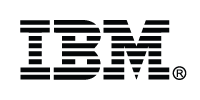Download this article in PDF format.
Artificial intelligence (AI) came in with a bang and has been going strong ever since. It’s touching most corners of the business world, procurement included. From automating routine tasks like invoice processing to helping buyers pinpoint demand fluctuations to assisting with supplier selection, AI is helping procurement departments save money and time; automate manual tasks; and operate more efficiently.
Artificial intelligence is also helping procurement teams move faster, manage the risks that are being thrown at them and deliver even more strategic value to the organizations that they support. “Traditional tools were not designed to address the level of complexity faced by enterprises navigating a landscape of technological shifts and global market disruption,” Levelpath points out in a recent Institute for Supply Management (ISM) article. “That is why organizations are turning to AI-driven procurement automation to upscale their processes.
7 Ways AI Supports Procurement
Here are seven different ways electronics procurement departments can use AI to reduce complexity, save time and reduce manual work:
- Sync data across sources. Manual entry, fragmented data and approval routing delay cycle times and drain resources. “AI-driven automation streamlines these processes by creating a unified ecosystem where data, applications, and workflows operate in sync,” Levelpath says.
- Optimize spend and demand. With the application of AI and generative AI (gen AI) technologies, McKinsey & Co. says category management can be automated and accelerated in multiple ways. For starters, spend categorization algorithms can create cleaned spend cubes seamlessly. Demand forecast and optimization accuracy will improve as a result, making sourcing, demand, and supply chain control and optimization that much more relevant and on target.
- Redefine cycle times. The unified approach to procurement doesn’t just improve cycle times; it also redefines them. Organizations adopting this approach see measurable efficiency gains, according to Levelpath. “Procurement teams deliver outcomes in days, resources shift from administrative burden to strategic value creation, and control improves even as processes accelerate.”
- Manage external profitability drivers. Take commodity prices, for example. Using AI, procurement teams can easily combine internal data with external market reports and databases. They can then use machine learning algorithms to uncover patterns and trends in commodity prices. “Chief procurement officers and category managers will rely on such predictions,” McKinsey says, “to stay at the forefront of industry profitability with real-time transparency on price volatility exposure.”
- Track spending. Cost reduction remains a core focus for most procurement teams. From vendor selection to compliance and risk mitigation, AI helps procurement teams reduce unnecessary spend and improve outcomes. “Real-time analytics allow teams to track spending patterns, consolidate contracts, and avoid costly errors,” Levelpath adds.
- Enhance supplier relationships. These bonds are critical to long-term success. By continuously analyzing supplier data, AI enables proactive management of partnerships. In return, procurement teams gain real-time insight into compliance, performance and negotiation. “AI can also simplify RFP comparisons, vendor communications, and renewal processes,” Levelpath says. “This approach ensures supplier capabilities stay aligned with evolving business needs.”
- Manage and mitigate supply chain risks. Last but definitely not least, procurement departments can transform AI into a risk mitigation tool. In fact, McKinsey predicts that by 2030—just five years from now—procurement departments will be using digital supply chain twins to get “near live” views of the associated supply chain risk. “Procurement will not only have a thorough understanding of the present state of its supply chain,” the firm says, “but will also be able to simulate the risk level given forecasted business growth, the occurrence of risk events, and the effect of mitigation actions.”
About the Author
Avery Larkin
Contributing Editor
Avery Larkin is a freelance writer that covers trends in logistics, transportation and supply chain strategy. With a keen eye on emerging technologies and operational efficiencies, Larkin delivers practical insights for supply chain professionals navigating today’s evolving landscape.






